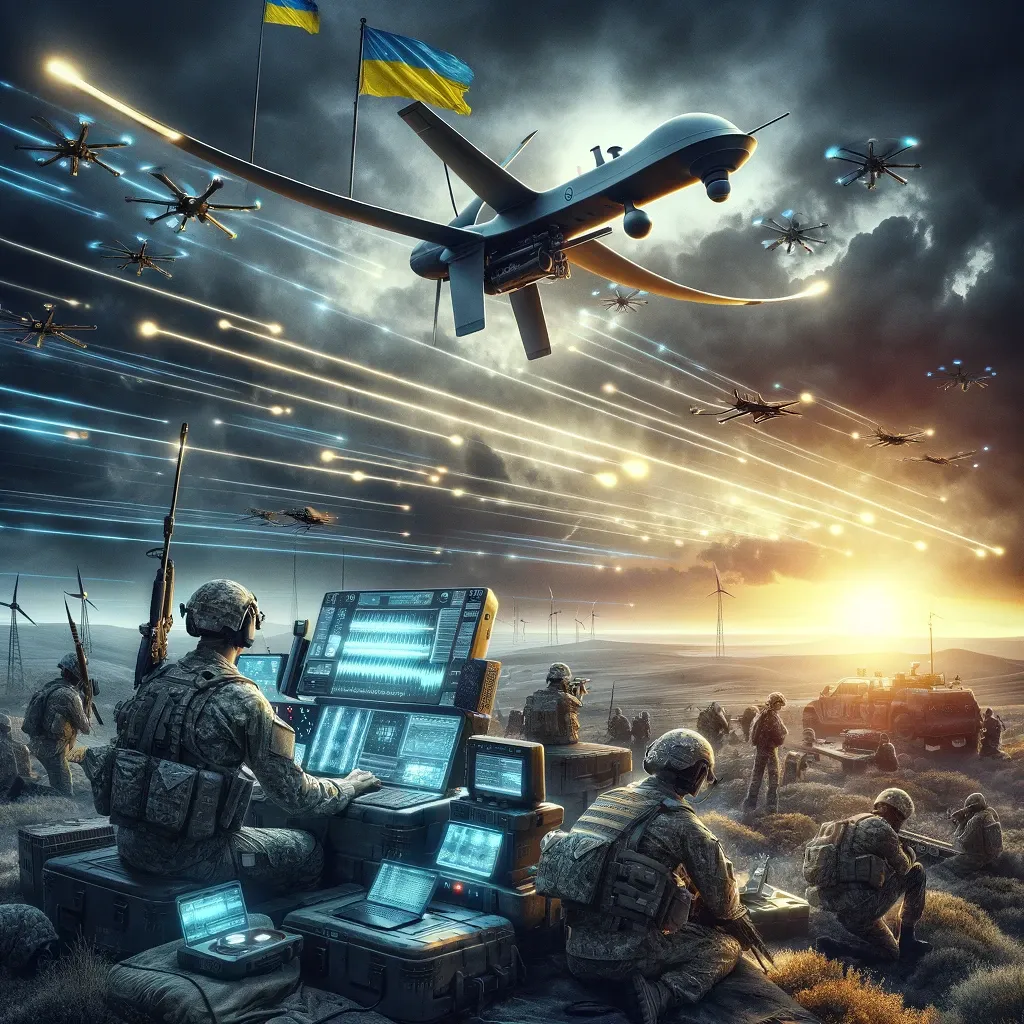The Invisible War: Ukraine's Struggle Against Russia's Electronic Warfare Dominance
In recent times, the conflict between Ukraine and Russia has escalated, revealing a stark reality: the crucial role of electronic warfare (EW) in modern combat. Russia's unprecedented aerial attacks on Ukraine during the New Year period have spotlighted Kyiv's efforts to enhance its EW capabilities, aimed

In recent times, the conflict between Ukraine and Russia has escalated, revealing a stark reality: the crucial role of electronic warfare (EW) in modern combat. Russia's unprecedented aerial attacks on Ukraine during the New Year period have spotlighted Kyiv's efforts to enhance its EW capabilities, aimed at jamming and diverting enemy drones and guided missiles.
Ukraine, initially lagging, is making strides to catch up with Russia in this invisible war. Mykola Kolesnyk, a Ukrainian drone unit commander, describes the EW confrontations with Russian forces as intense and unyielding. He likens it to "invisible scissors," severing the control of remotely operated devices.
Both nations are employing tens of thousands of drones monthly, increasingly relying on affordable, commercially available first-person view drones. Colonel Ivan Pavlenko, Ukraine's chief of EW and cyber warfare, emphasizes the growing significance of EW due to the massive use of drones. He urges allies to provide more capabilities to disrupt the satellite guidance systems of Russian missiles and drones.
Russia, with a head start in EW development, poses a considerable challenge. Its systems, requiring advanced components, have prompted calls for sanctions on these elements from Ukraine's allies. The battlefield, now saturated with drones, has led to a largely static land war, with any concentration of forces quickly spotted and neutralized.
Russia's EW capabilities, sophisticated and widespread, have been used to deflect Ukraine’s western-supplied munitions and mimic missile and drone launches, creating confusion in Ukraine’s defenses. This technological edge has left Ukrainian troops vulnerable to drone-guided strikes and kamikaze attacks by unmanned aerial vehicles. General Valeriy Zaluzhny, Ukraine's armed forces commander-in-chief, underscores EW as pivotal in drone warfare and the key to unlocking the current stalemate.
Ukraine's response involves both domestic and international efforts. It has improved its EW systems with domestic production and western support, keeping details confidential for strategic reasons. Systems like the Bukovel, capable of detecting and jamming drones and blocking satellite guidance, have proven effective. The newer Pokrova system reportedly counters missiles by disrupting their guidance systems.
Kyiv is also pressing for modern EW systems to be included in the soon-to-be-delivered F-16 jets from western allies. Pavlenko boasts of Ukraine's success in capturing and tricking Russian UAVs and suggests Ukraine could serve as an EW testing ground. Despite some reluctance from western militaries to share technology, Ukraine sees high-tech EW as the future of warfare, a domain where battles are won and lost beyond sight and sound.




